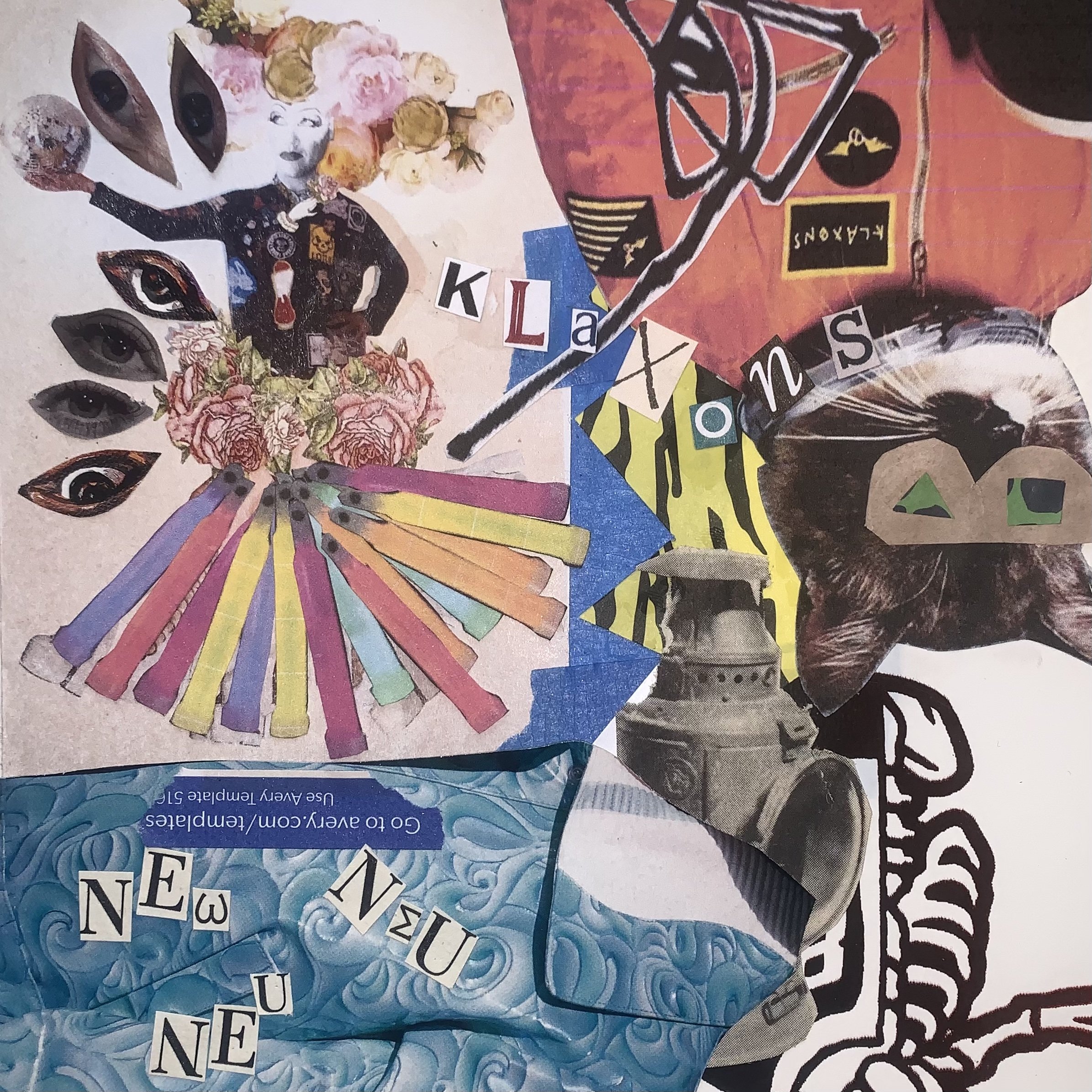Klaxons and the new rave eruption.
artwork by Elijah Perkins.
It starts with a practical joke at the end of 2005. The prankster? None other than the English rock band Klaxons, newly formed and posting flyers for their first-ever show. Their sound is biting, angular, embedded with bits and pieces of the rave scene of the early nineties; their attitude is equally as progressive as it is punk, full of spirit, glowsticks in hand. They call it “neu rave,” identifying their music with the punchiness of new wave and the experimentalism of krautrock, all but drenched in the cynical sardonicism of the mid-aughts—although this term would later be rewritten as “new rave” by NME.
More specifically, the genre that we now know as new rave is closely aligned with the alternative dance of the nineties, which saw indie rock bands assimilate synthesizers and drum machines into their music. In its heyday, the alternative dance label would be used to describe bands such as New Order, Saint Etienne, and Chumbawamba, whose music in this era experimented with merging house rhythms and alternative rock. The post-punk revival of the early aughts produced a new generation of straightforward indie rock musicians who shed their sound of electronics, which lent the scene to a second wave of “alternative-danceificiation,” especially revolutionary in light of the decade’s innovative technology and newfound accessibility. This resurgence would go on to become new rave.
Klaxons may or may not be a band to take seriously; their highbrow lyricism and unprecedented musicianship seem to clash with their tongue-in-cheek humor and chaotic energy; they push the British zeitgeist, at the time experiencing a rather chaste revival of garage rock and post-punk, into new territory by incorporating elements of emerging underground electronic scenes into their sound. With the increasing accessibility of digital audio workstations and the popularization of the internet, music production becomes easier in this decade than it ever has been, and Klaxons are able to take advantage of this ease and give their music a raw, DIY ethos that fits snugly into the garage rock and at-home electronic crazes of the time.
Klaxons release their first album, Myths of the Near Future, in January 2007. Named for a collection of science fiction short stories, it presents a sylvan future lined with themes of totemism and prophetic spirituality, using a lyrical palette of folklore and theology to paint a picture of the morrow vividly rooted in archaism. Its soundscape is comparably robust, an absurdist collage of noises and styles, oozing with almost ritualistic guitar hooks and blaring synth lines, never settling on a single idea for too long. Back to back on the tracklist are the psychedelic “As Above So Below,” a lo-fi indie rock song interspersed with industrial metal riffs, and the gloomy “Isle of Her,” a gothic dirge, a dark, obtuse turn into Trojan mythology.
Myths is a very anachronistic album. From the get-go, the uncanny sleeve of the record demonstrates this—a kaleidoscopic collage of past, present, and future, it becomes difficult to draw the line between antiquity and modernity. In the music itself, a four-on-the-floor rhythm constantly pushes the album forward, but whether this is ritualistic or mechanical is indiscernible. The shrieking synths of “Atlantis to Interzone” are holdovers from the past of ‘90s rave, placed overtop zappy dance-punk that never quite lets up on its intensity — even its transitions retain a baseline punchiness. “It’s Not Over Yet” is a cover of the classic trance single by Grace; the band transforms the heartbreak of the original into an unceasing storm of guitar fuzz and synth bursts, turning a club staple into a stadium-ready anthem.
That same year, Klaxons go on to win the Mercury Prize, over the likes of the evocative songstress Amy Winehouse, fellow new ravers New Young Pony Club, and my personal favorite Bat For Lashes. In a post-show press conference, they promised to donate their winnings toward telepathy research and to create “new-new rave;” the band had clearly not lost their personality with their success.
But, in spite of this tour de force, new rave is not destined for a long life; it falls out of fashion just as quickly as it once fell into it. The genre dies in NME’s arms at the beginning of 2008. Briefly and quietly, with an unexpected reverence for something that never really existed to begin with, it is extinguished by the burgeoning Electro scene, the genesis of Crystal Castles and the movement of electronic music into darker territory. And this makes sense — new rave is, at its core, a reaction, a pushback against a trite indie revival, rather than a genre that can stand on its own. With ideas too bright and too frequent, there is nowhere new for it to go by the end of the decade.
Today, new rave is best remembered for the innovative artists that the term described and the “fuck-it” ethos that they embodied; albums like the time-honored Fantasy Black Channel by Late Of The Pier and the genre-defying (some may argue “good-taste-defying”) Sex Dreams and Denim Jeans by Uffie are among the most pivotal and forward-thinking of the late 2000s. A straight line can be drawn from the burst of new rave to the explosion of hyperpop—the late genre has had a direct influence on a wide range of critically-lauded artists from Kero Kero Bonito to Charli XCX, and the auditory landscape of popular music is ever-changing with the help of visionary at-home musicians. So, while new rave itself may be dead, the revolution it sparked has only just begun.
edited by Nico Martin and Maria Kravtsova.
artwork by Elijah Perkins.

